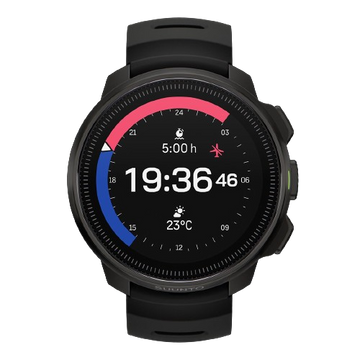

Suunto Blog
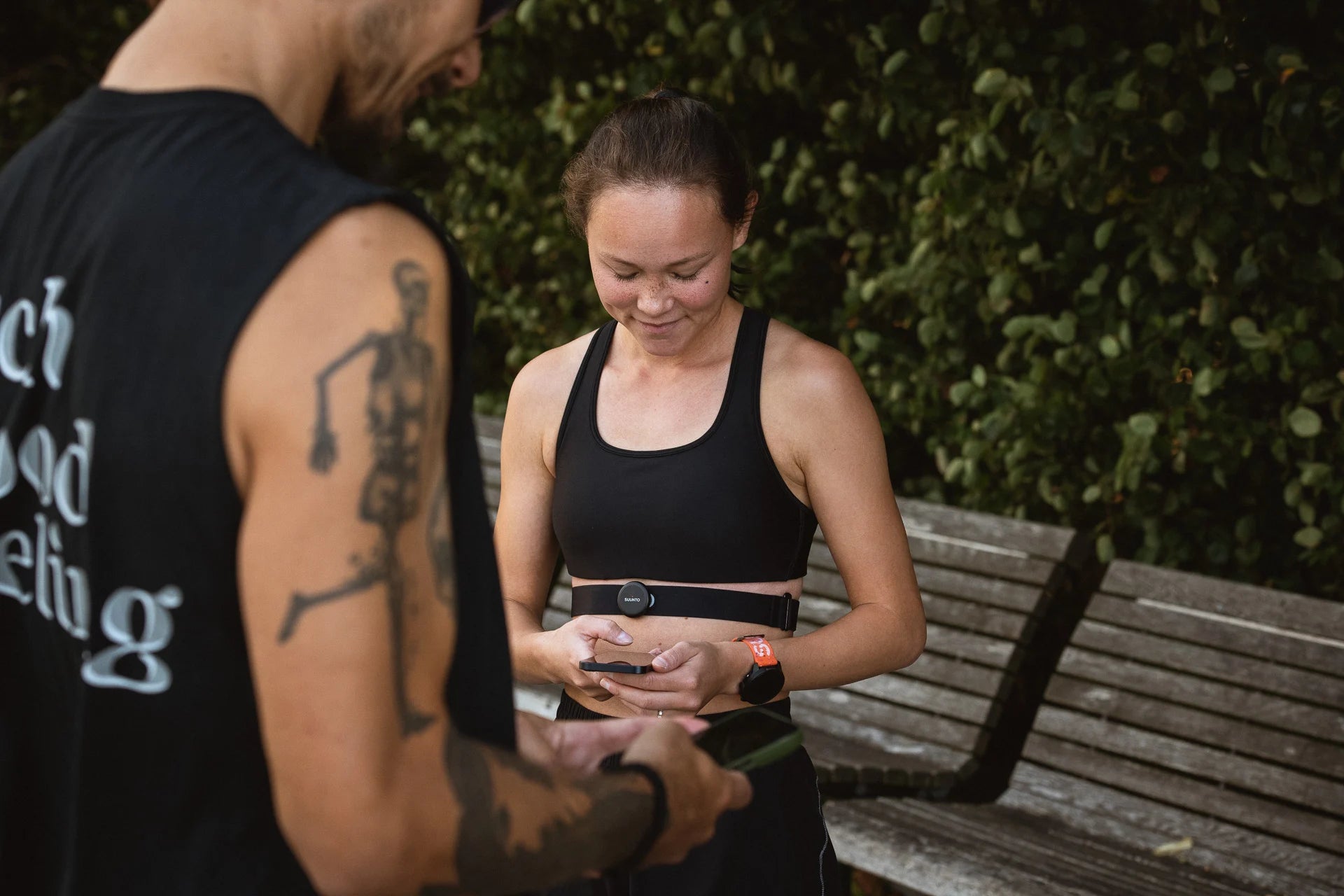
Introducing ZoneSense: Revolutionizing Intensity insights with Heart Stress Measurement
ZoneSense offers insights into whether your body's physiology is working aerobically with lower stress levels or if it has transitioned into higher stress, anaerobic efforts.
Different sports impose varying demands on your cardiovascular system. Measuring intensity with heart rate can be difficult as the heart rate changes across different activities such as cycling and cross-country skiing, where same heart rate can be aerobic in one sport and an-aerobic in another. Additionally, daily performance fluctuations up to 5-10% can make it challenging to use predefined intensity levels.
ZoneSense addresses these challenges by measuring the heart's response to workout intensity in real-time. This innovative technology empowers athletes to monitor their exertion levels daily across various sports disciplines. The following examples show how the ZoneSense measures your heart in different activities.
Aerobic sessions
Aerobic long run
To keep the long runs purely aerobic, athlete should keep the ZoneSense state green most of the time. Its normal to see constant fluctuation of the DDFA index value in easy efforts such as in this example mainly around +0 - +0.4. On outdoor runs where athlete might need go over some hills, the Zonesense can illustrate this by turning to an-aerobic time to time. This type of few spikes that goes bit over aerobic threshold, is normal aerobic workouts.
Long ride with 3x45min an-aerobic effort
The example illustrates a long bike ride of 5.5 hours, where the last part of the ride includes three 45minute sections with “Ironman race pace effort”. The three 45min work sections illustrate the effort at and above aerobic threshold as DDFA index turn mostly to yellow. As the temperature is close to 30 degrees, one can observe a raised heartrate after 3.5 hours, where the workout intensity is kept the same, but heart rate has now elevated by 15-20 beats per minute. ZoneSense however shows the steady intensity level.
Interval sessions
Long intervals - Cycling
The harder interval sessions where athlete is working at an-aerobic threshold or even above can be hard to quantify on everyday sessions, do I go too hard or is it too easy. The ZoneSense helps to illustrate if you were reaching the threshold or did you go even beyond. The example here illustrates 6 x 7 min intervals above an-aerobic threshold. The ZoneSense gradually increases during the first 2-3 minutes in interval to get above threshold level.
Interval workouts are a common way to do the harder training efforts. ZoneSense DDFA index requires a longer period of consistent intensity due to time it takes the body to reach the homeostasis. The ZoneSense requires the effort to be consistent at least 2-3 minutes to accurately represent the intensity level, with shortchanges this is not achieved. In the above example if the interval would have been stopped after 2 minutes, even with high effort the ZoneSense would have not reached the an-aerobic state. This can also be seen from the heart rate in the background, during the first 2 minutes the heart rate is rising despite constant effort. This is caused by the heart’s slow adaptation to the changed intensity level.
Long intervals - Open Water Swimming
ZoneSense is not limited only to most common endurance sports such as running and cycling. Here is an example of an open water swim session where an athlete has done a 12 x 300m repetitions in lake with a short 30-45s rest between. The goal of the session has been to swim in good sustainable tempo pace. The ZoneSense illustrates this by reaching the an-aerobic level at end of each repetition. The pace is kept the same except with the last one being harder. The cumulative load of the work is illustrated by the last half of the repetitions always reaching an-aerobic state where the first ones don’t all reach this.
Long intervals - Rowing
Following is a rowing workout 4x6min hard efforts and 8x 40s with 20s recovery. ZoneSense shows effort reaching to over an-aerobic threshold. The shorts repetitions also reach red, as recovery is short.
Short intervals with short recovery - Cycling
With high volume of short intervals done with short recovery, the ZoneSense is able to illustrate the cumulative intensity. The example here illustrates the large volume of intervals with short recovery, 13x30s with 15second recovery. This effort can be shown as a black line illustrating cycling power. The ZoneSense DDFA index grows during the first five repetitions into an-aerobic range and then with next few following reps will reach the vo2max range represented in red color. This illustrates nicely the load for higher volume reps where the effort in power can be argued to be on correct level. Here the 15 seconds recovery is so short that the body’s homeostasis doesn’t recover into low intensity between the repetitions and rather describes the cumulative intensity of the constant intervals.
Short intervals with long recovery - Running
The ZoneSense is not able to monitor short bursts with longer recovery sessions in a meaningful manner. ZoneSense requires to reach a homeostasis with the intensity. The running interval example with 20x400m with 40 s recovery illustrates that the measurement does not indicate the harder running pace as interval duration is short with relatively long recovery. If the intervals would have been longer each interval would have reached an-aerobic intensity or if recovery would have been shorter the cumulative intensity impact would have been shown as in the previous example.
Higher Intensity Near Anaerobic Threshold
Half marathon
The following examples illustrate the ZoneSense in session where intensity is an-aerobic and reaches regularly an-aerobic threshold level. This example is from a half marathon race where recreational runner is pushing their own limits close to 1.5hours. The racecourse has some turns and hills, which impact on the intensity effort that athlete is working. The ZoneSense shows the intensity at an-aerobic effort in yellow with several sections shown at red in vo2 range. When comparing the black line illustrating the pace, one can observe a slight gradual decline of the pace. Similarly, one can see slight decline in heartrate. However the ZoneSense illustrate the yellow & red sections as athlete has tried to keep the intensity as high as possible.
Ice hockey with various effort spikes.
Its common method for endurance sports athletes to do a performance test in laboratory to establish the aerobic and an-aerobic levels as heart rate, pace or power. But for many sports this is not possible as the laboratory protocols do not represent sport in real life. Here is an example of an ice hockey game where players have been using ZoneSense to measure their effort during the game. Each work effort is shown as an-aerobic work where spikes in VO2max area.
For team sports such as ice hockey, football, basketball its very difficult to understand the real intensity levels as laboratory test done in treadmill or exercise bike doesn’t truly correlate to the effort in the field. ZoneSense could be a solution for some of these sports or training sessions for these athletes.
The challenge with ZoneSense is the requirement for constant work. Effort that leads to homeostasis a.k.a. balance needs to be long enough to DDFA index truly represent the intensity of the work. With many team sports and racquet sports, this can be a limitation with very short work durations and long rest periods. However, even if the games themselves couldn’t be measured with ZoneSense the training sessions with enough cumulative work could potentially be applicable for ZoneSense. This would be the long waited intensity measurement in team sports.
Muscle fatigue impact
ZoneSense is measuring stress with heart rate variability. This stress effect correlates to metabolic state of the body, where less stress is aerobic, and more is an-aerobic. However, the metabolic state is not the only effect but can be induced with other stress factors. Here is a test example where an athlete has done two ramp up protocols with ergometer in one workout. The first part can be seen from 8min-16min and the second at 1h 15min – 1h 23min. The middle part of the session was strength training heavy leg exercises. The impact of fatigue in leg muscles can be witnessed on the ramp up protocol where ZoneSense reaches a higher intensity range compared to the first version. The impact is not massive, but still illustrates the other stressful factors.
By measuring the actual response of the heart to workout intensity, ZoneSense offers athletes a reliable and daily tool to optimize their training across different sports. This technology is set to revolutionize how athletes understand and manage their physical stress levels, enhancing performance and recovery.
A similar impact of muscle load and potential different intensity levels can be found in the hiking session. The steep uphill and downhill make the workout become an-aerobic. Where the heartrate itself especially in downhill wouldn’t indicate this. The muscle fatigue and stress associated raises the ZoneSense intensity.
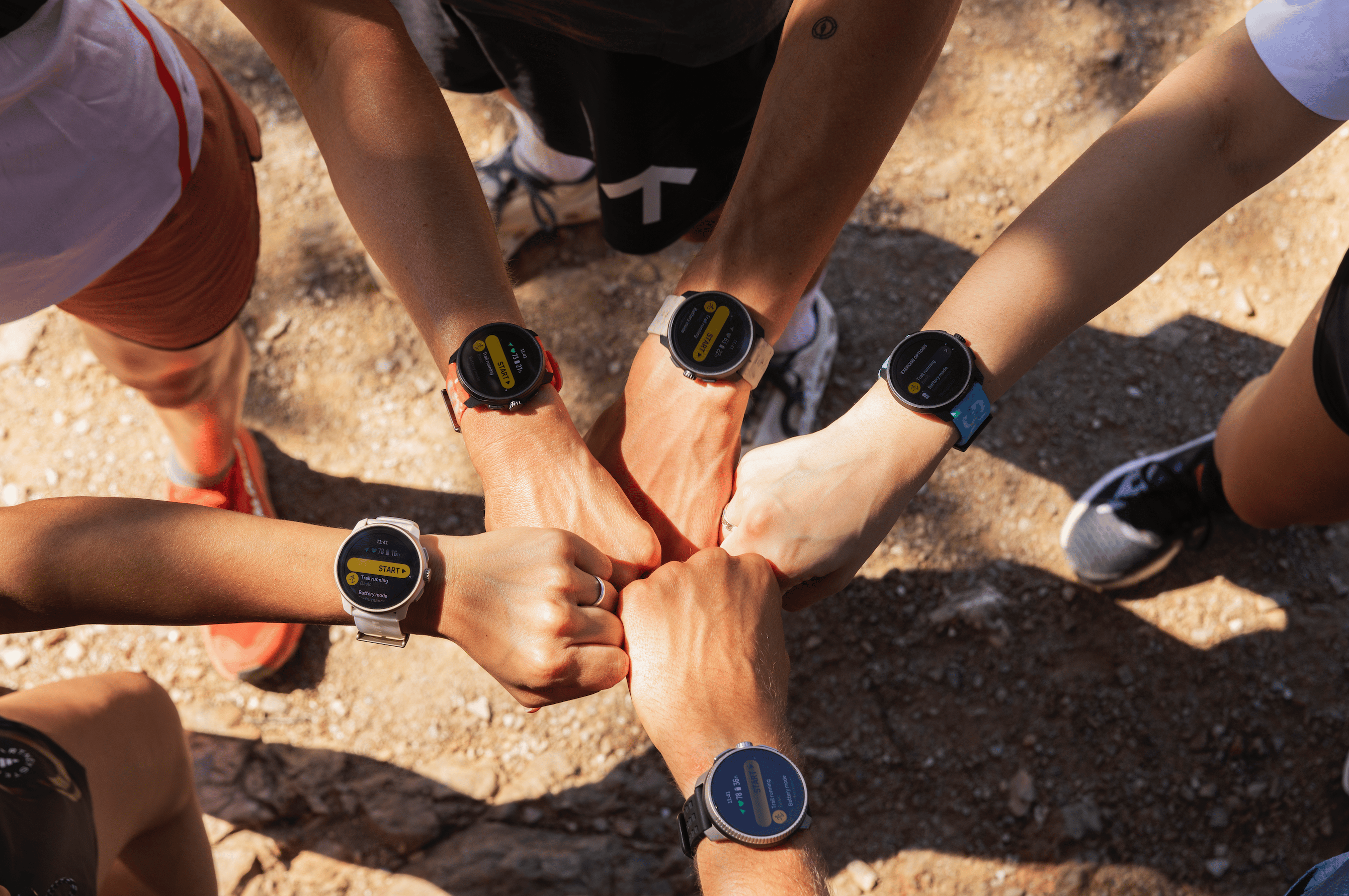
Suunto ZoneSense FAQ
Why does ZoneSense require a heart rate belt?
To get accurate measurement of one’s heartbeat requires a heart rate belt. This data is essential for detecting differences between R-R peaks in heart rate. Optical heart rate monitors can only perform this type of measurement reliably at rest, such as during sleep.
Can ZoneSense be used with any heart rate belt?
Yes, any heart rate belt that provides beat-to-beat data can be used with ZoneSense. However only Suunto hr belt works in swimming with its inbuild memory.
Can ZoneSense be used with an arm heart rate monitor?
Arm heart rate monitors use optical heartrate. This cannot be used to measure the beat to beat data accurately during exercise, therefore ZoneSense is not available for these sensors.
How can I get ZoneSense on my watch?
To install ZoneSense, go to the Suunto App SuuntoPlus Store, select the ZoneSense Sports app, and save it to your watch. Next time you start your workout, select ZoneSense. For subsequent sessions in the same sport mode, ZoneSense is automatically selected.
Which watches support ZoneSense?
ZoneSense works with all Suunto watches with heart rate belts for post-analysis. This includes older models like Suunto Ambit and Spartan. Live data with ZoneSense is supported on the latest Suunto watches with the latest software, including Suunto 9 Peak Pro, Suunto Vertical, Suunto Race, Suunto Race S, and Suunto Ocean (later in autumn).
What does ZoneSense show on the Suunto app?
ZoneSense SuuntoPlus sports app shows your intensity graphically as green, yellow and red. Time in currently spend in given intensity and cumulative time in each intensity in workout. The cumulative time doesn’t include the first 10 minutes of training, as this period cannot be measured (read about this on next question).
The athlete can press the upper right button on their watch to change the fields shown, to follow other values such as pace, vertical, speed, power instead of cumulative time in zones.
Is it normal that ZoneSense SuuntoPlus sports app doesn’t show the intensity of my training’s first 10 minutes?
Yes. The ZoneSense DDFA (Dynamical Detrended Fluctuation Analysis) index cannot be measured accurately during the first 10 minutes as the body is typically then still warming up. The real-time measurement and after analysis therefore don’t show the data during this time.
Is it normal that cannot see my friend's ZoneSense numbers?
The ZoneSense analysis is visible only for your own workouts, and is hence personal.
Can I see ZoneSense data in my old workouts?
Yes you can. However, these numbers should be treated with caution, and most accurate data is received from new workouts with ZoneSense enabled.
My old workouts with ZoneSense data looks a bit off, what is the reason?
As ZoneSense is published in mid September 2024, each new workout is used to understand your personal sport specific baseline level of the DDFA. This will make the ZoneSense analysis more accurate over time. The older workouts prior enabling ZoneSense will have ZoneSense data, but as these do not include personal baseline analysis, the ZoneSense has error that can shift the ZoneSense graph 10-20% higher/lower.
Is there a way to make ZoneSense measurement more accurate?
As ZoneSense measures each workout, it will analyze the athlete’s normal aerobic baseline heart-rate variability with the DDFA index, used in as a parameter of the ZoneSense measurement. The intensity state of aerobic (green), an-aerobic (yellow) and vo2max (red) ranges are then evaluated based on the shift from this normal aerobic level, a.k.a. the workout baseline. The workouts that have very little aerobic effort will not contribute to this baseline definition. To have the best possible accuracy with ZoneSense, please ensure that you have easy aerobic sessions in your training regularly to analyze the effort of different types of training.
How can I get the best possible aerobic & an-aerobic threshold as heartrate evaluated?
You can use ZoneSense as an intensity measurement without the need to analyze the intensity with pace, power or heartrate. But there are workouts such as short intervals where pace and power are more suitable as they react to intensity changes immediately. Naturally, the athlete can use heartrate as a measure of intensity, as well as power and pace. There is an analysis feature with ZoneSense where Suunto App defines the aerobic and an-aerobic threshold as heartrate with the DDFA. This analysis maps the heartrate to the ZoneSense DDFA index shifts cross aerobic and an-aerobic thresholds. To get a result from this analysis, the athlete needs to do a workout where intensity is tough and challenging. The intensity needs to grow from aerobic area to an-aerobic level, to get the aerobic threshold as a heartrate result. Similarly, to get the an-aerobic threshold, the athlete needs to do a workout that will have intensity in vo2max range.
To get a threshold result, the athlete can do a workout where he/she increases the intensity of the effort step by step. Increasing the intensity gradually ensures that there is enough measurement data in each effort level and therefore as the athlete goes over thethresholds it’s possible to identify heartrate at this intensity. This can be done in different sports such as running, cycling, rowing, even swimming. The idea of step-by-step protocol is to stay in each intensity for several minutes for example jogging easily for 3mins, then increasing each 3 minutes the pace and repeat this until max effort.
Sports and use cases
Why should I start workouts at an easier effort with ZoneSense?
ZoneSense establishes a personal intensity scale by measuring “DDFA index” during easy aerobic efforts. This baseline is updated with each workout but cannot be identified in high-intensity efforts. Accurate measurements therefore require regular easy workouts to keep the personal DDFA level up to date.
This personal baseline level can change throughout the year and can have differences even on day to day basis. Therefore, the best possible accuracy in the measurement you can get with ZoneSense requires a warmup period at the start of the workout.
My workout did not seem to be in “right intensity”, what could be the reason?
ZoneSense is best when used while doing workouts with steady effort, or during long intervals. The short bursts of effort, for example 1 minute intervals, do not reach homeostasis in your body. Therefore the DDFA index used with ZoneSense does not represent the intensity at that time.
Each workout you do will impact how your personal ZoneSense measurement works. The normal easy aerobic level measured with DDFA is saved to your watch & personal profile. As you do a new workout it will contribute to this baseline measurement. If you do a first run with Suunto and this would be with very high effort, the ZoneSense can try to measure this DDFA level as your normal state. This might provide the wrong type of output. Ensure you make easy efforts also with your Suunto watch and heartrate belt, so that your normal baseline is calibrated accordingly.
When should I use ZoneSense instead of pace, power, or heartrate to identify my training intensity zones?
ZoneSense is ideal for steady workouts, such as long aerobic, hard threshold sessions or long interval sessions that last over 3 minutes. For short intervals, like 1-minute sprints, use running pace or cycling power for more accurate measurement. ZoneSense requires the athlete to work on given intensity at least 2-3 minutes in order to properly show the intensity level.
However, with ZoneSense you will learn which effort level in power, pace, vertical speed, swim pace you can sustain in your aerobical, an-aerobical and vo2 max area. This information you can be useful in daily training when adjusting your effort in each workout.
How does ZoneSense work with team or racquet sports?
In sports where the athlete can be working out constantly, ZoneSense can indicate whether the activity is primarily aerobic or anaerobic. However, due to delays in the measurement of ZoneSense and the nature of short bursts in the most common team and racquet sports, the actual effort intensity might not be shown correctly with ZoneSense. For example a 1-minute max out sprint followed up by longer rest lag can be shown in ZoneSense as completely aerobic level intensity training.
However, if the higher efforts are repeated with short recovery periods, the cumulative impact will be shown in ZoneSense.
ZoneSense is evolving, and feedback from sports scientists, coaches, and athletes is welcome to improve its application.
How can ZoneSense be used for swimming?
The Suunto heart rate belt stores data within its sensor module, as the heartrate signal cannot be transmitted underwater. Once on land or at the edge of a pool, the beat-to-beat heart rate data is transferred to the watch. ZoneSense data is then available for post- analysis to learn the real intensity from the session. Does ZoneSense work with strength training?
ZoneSense focuses on aerobic and an-aerobic efforts by analyzing DDFA – the Dynamical Detrended Fluctuation Analysis index. Strength training intensity is based on muscular effort, not cardiovascular, making ZoneSense less suitable for strength-based workouts.
Can ZoneSense consider muscular fatigue, heat or other stress factors?
ZoneSense measures the stress of the heart which correlates with the aerobic, an-aerobic, vo2max states, but there are examples that indicate that ZoneSense can consider other factors that impact performance. For example, the fatigue in a muscle seems to impact the athlete so that ZoneSense will reach higher intensity levels faster. This means that the performance level shows decline when having muscle fatigue and in order to keep working out in normal level they would need to ease the effort.
Could ZoneSense be used to measure intensity in challenging levels of altitude or in hot conditions?
In altitude or in hot conditions, heart rate, pace and power measurements do not represent the intensity defined in laboratory conditions. Challenging and abnormal conditions make it difficult for the athlete to understand what a suitable effort level would be. There is a possibility that ZoneSense can be used in different conditions, as it measures the stress level of the heart and therefore is considering different internal and external stressors. However, this aspect will require more research.
ZoneSense analysis
Why isn’t the start of the exercise shown in the analysis?
The initial part of the workout serves as a warmup, allowing the body to adjust to exercise mode. During this time, measuring heart rate variability does not accurately correlate with exercise intensity. As a result, ZoneSense does not display data during this period in live tracking or in post-analysis.
Why isn’t short intense effort shown as hard effort with ZoneSense?
ZoneSense measures stress with DDFA, which has inherent delays. When you start a sprint, it takes several seconds to minutes for your body and heart rate to adjust. In a normal ramp-up test protocol in laboratory conditions, this delay is managed by working in the same effort for more than three minutes. During this time, the body metabolism “matches” the effort intensity such as lactate level in blood. Similarly, ZoneSense requires a set of data before producing a relevant DDFA value, resulting in a delay of up to 1-2 minutes.
When gauging the right intensity level in running, cycling, swimming with shorter intervals or sprinting, the best measurements of intensity would be speed, pace, and power measurements. However, these will require predefined zone levels. ZoneSense can be used in after analysis to understand the power and speed levels in given effort, illustrated with the ZoneSense DDFA index.
Science background
What is the difference between HRV, RMSSD, DFA-1and DDFA?
These are different metrics used to analyze heart rate variability (HRV):
HRV: Heartrate variability means the variation in time intervals between heartbeats. When the heartrate is 60 beats per minute, the average time between beats is 1 second. When a person is relaxed the variability between beat to beat has a difference, for example time between beats is 950ms (about 1 second),1050 ms, 940ms and so on.
RMSSD: The Root Mean Square of Successive Differences is the most common method to calculate the short-term heart rate variability. This is commonly used to measure stress levels during the night or daytime stress test. This is used in Suunto to analyze your recovery state with night time measurements.
DFA -1: DFA-1 refers to the short-scale scaling exponent covering 4-16 beat-to-beat intervals. The scaling exponent is conventionally computed for the full time series, thus giving one number as an output.“DDFA, on the other hand, covers all the time scales from 4 beat-to-beat intervals to even thousands, and gives an output for each particular time scale (4, 5, 6, ..., 1000). Furthermore, those values are given dynamically as a function of time. As a result, DDFA gives as an output a two-dimensional map of scaling exponents. Thus, DDFA is significantly more accurate and reliable than DFA-1, and as a real-time method it is responsive to changes in physiological conditions.
**DDFA**: Dynamical Detrended Fluctuation Analysis. The method evaluates how the heartbeat intervals change with respect to each other, and how these changes at some time affect the changes of heartbeat intervals during other times. Such dependencies between the intervals are called correlations. DDFA evaluates the characteristics of these correlations very precisely at every instant of time. How do aerobic and anaerobic thresholds work with ZoneSense?
ZoneSense measures the DDFA index during and after training. The anaerobic threshold is identified as a -0.5 change from the "0 baseline," and the aerobic threshold is set at -0.2. These levels correlate with laboratory tests but are indicative values representing changes in your metabolic system. Consistent use of ZoneSense provides a simple method for tracking intensity without frequent lab tests. ZoneSense illustrates the metabolic state of the body by measuring the stress level of the heart.
In principle, your daily fatigue, hydration level, heat, muscle soreness, running terrain and many other aspects can impact your current state of your body, impacting this DDFA index. For instance, you can reach your aerobic threshold at a slower pace than some days before.
How does ZoneSense measure heart rate thresholds?
ZoneSense maps changes as aerobic and an-aerobic thresholds to corresponding heart rate values. Sudden changes in intensity can introduce errors, so it is best to consider several workouts before setting heart rate zones in your Suunto watch.
Learn more
Where can I learn more?
Visit Suunto ZoneSense Page for detailed information on ZoneSense, including news, articles, webinars, and scientific insights.
Interested in testing ZoneSense together with Suunto?
If you are a national team, sports scientist, or pro-club interested in ZoneSense, please reach out to Suunto here
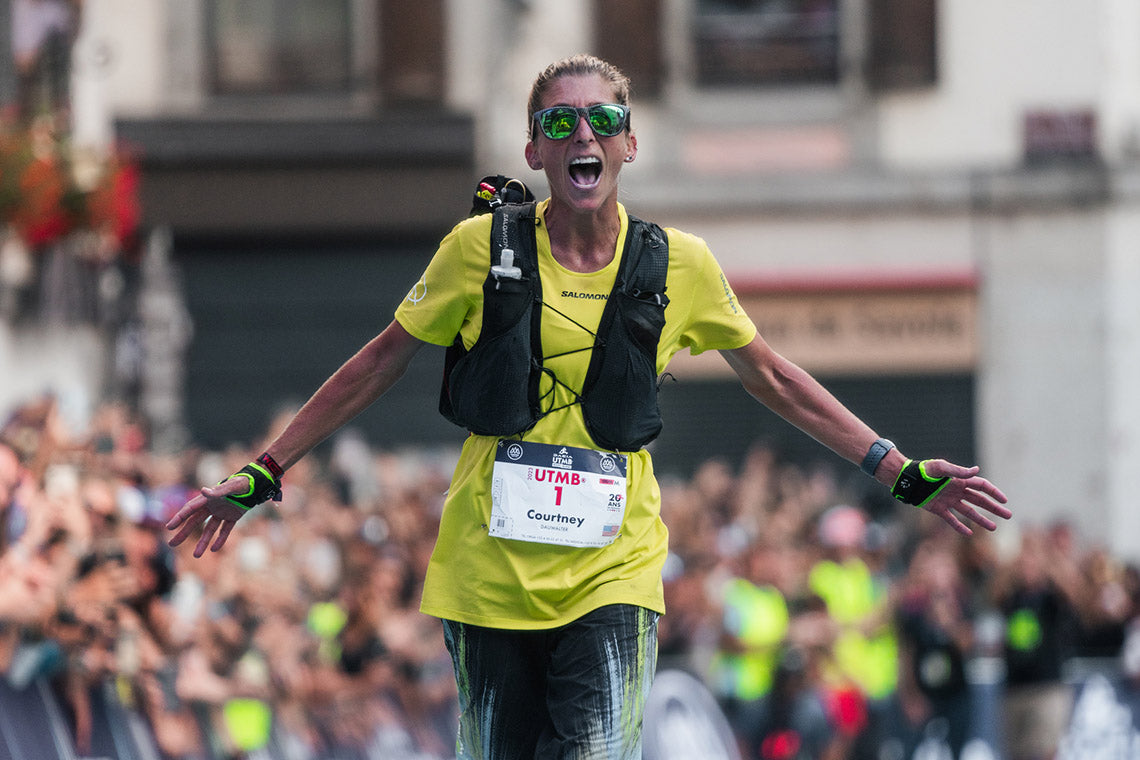
Run Your Own Virtual UTMB with Suunto
The 171-km race around the Mont Blanc massif is the most prestigious trail ultra in the world. With the new SuuntoPlus sports app, you can test the challenge wherever you are!
The Ultra-Trail du Mont-Blanc (UTMB) is one of the most prestigious and challenging trail running races globally. Its origins are rooted in the desire to create a race that encapsulates the grandeur and difficulty of running through the mountainous terrain surrounding Mont Blanc.
The first race was held in 2003. This year, runners will line up for the start at Place du Triangle de l'Amitié in the heart of Chamonix on August 30.
It can be hard to grasp how long the race actually is. To give you a feeling of the challenge, we have created the Virtual UTMB SuuntoPlus sports app that tracks your cumulative progress towards completing the legendary route.
Whether you are looking for a fun way to motivate yourself or aiming to one day run the race yourself, this sports app is for you!
The Virtual UTMB sports app shows your progress towards running the distance of the 171 km Ultra Trail du Mont Blanc: the top row shows your total distance and progress towards the goal, below you see your current activity distance and duration.
Here’s how it works:
Go to the SuuntoPlus Store in the Suunto app and sync the Virtual UTMB sports app on your watch.
Before starting your next run, go to ‘exercise settings’ and select the Virtual UTMB sports app in the SuuntoPlus section.
Start your activity. The Virtual UTMB sports app will be added as an extra screen. You will be notified as your reach the distance to various aid stations on the course.
The next time you use the same sport mode, the Virtual UTMB sports app will be there by default and keep adding distance towards your cumulative total of 171 km – the distance of the Ultra-Trail du Mont-Blanc.
Suunto is the official technical partner of the UTMB World Series. Learn about the races at utmb.world.
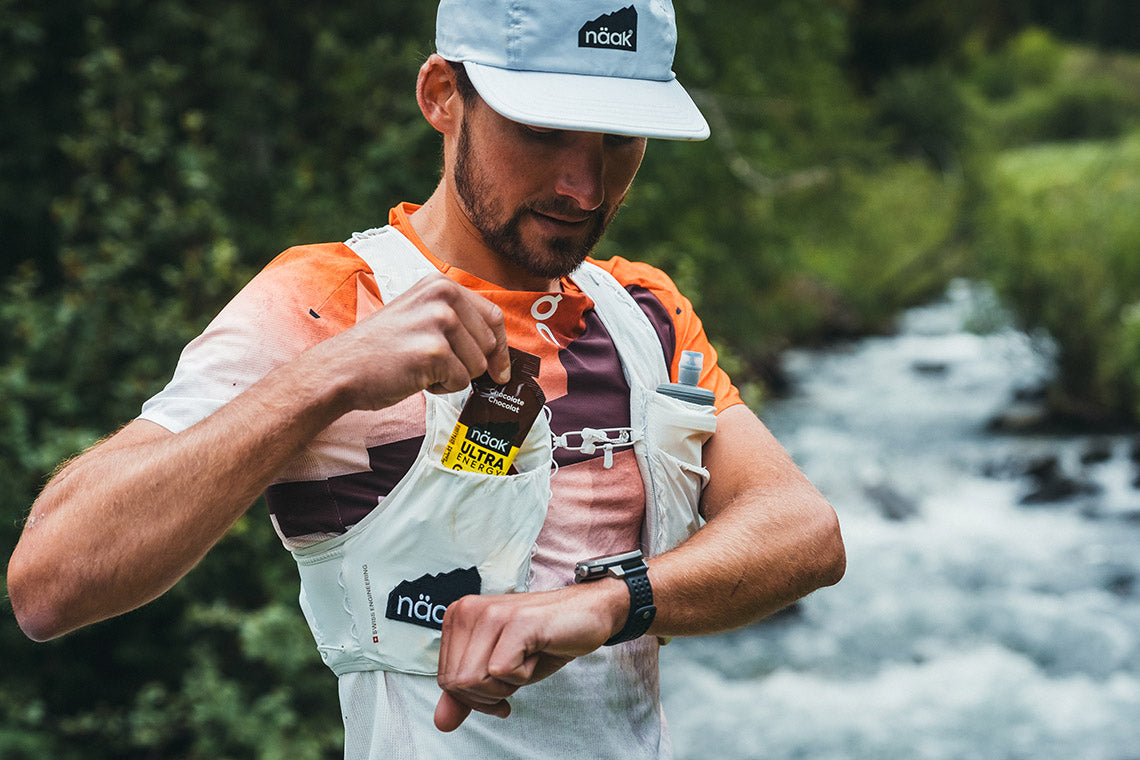
Sync Your Tailored Näak Nutrition Plans to Your Suunto Watch
We have partnered with the nutrition experts at Näak to provide you with real-time nutrition guidance.
Gastric and dietary issues affect 85% of runners and are the leading cause of abandonment, says Näak. The company has made reducing these figures their greatest challenge.
First, they created the Nutrition Calculator: a simple, concrete, and user-friendly online tool that designs personalized nutrition plans for you, based on your profile, goals, and race characteristics.
Now, Näak partners with Suunto to sync your custom nutrition & hydration plan to your Suunto watch for real-time guidance. A plan is a plan, but you also need to execute it well. That's when the SuuntoPlus Näak Nutrition Guide comes into play!
How to Use
1. Go to the Näak website and plan your nutrition needs for your race. Select the race you are interested in. Fill in the required info, like your personal profile and a target time.
2. Click ‘Add to Suunto’ on the result page to connect your Näak and Suunto accounts. The plan is then pushed to your Suunto account.
3. Before starting an activity, go to ‘Exercise settings’ -> ‘SuuntoPlus’ and scroll down to select ‘Näak Nutrition Guide’ for your race.
4. During the activity, you will see the nutrition guidance on its own screen on your Suunto watch.
All images by Simon Morice. Athlete Arthur Joyeux Bouillon.
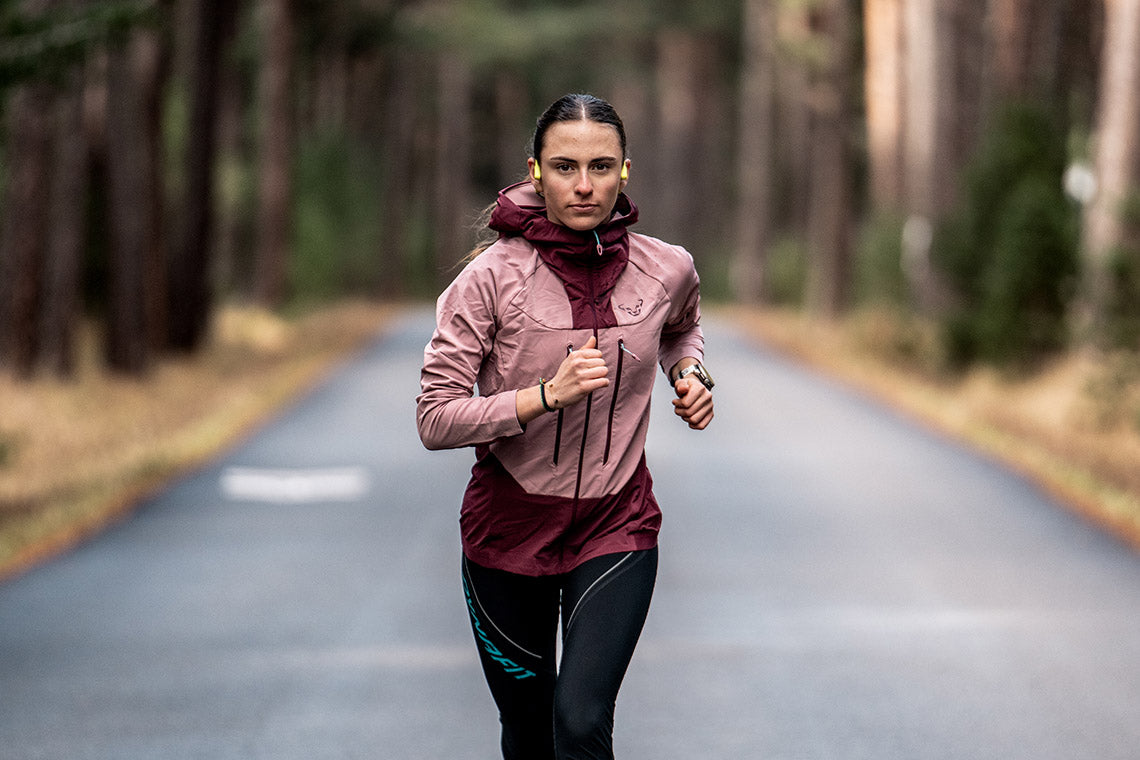
Community-powered training tunes
We asked the Suunto community for your favorite training music. Here’s what you listen to as two Spotify playlists!
In the pursuit of peak performance, the right playlist can be just as essential as the perfect pair of sneakers or a well-balanced meal. Understanding the profound impact music has on our workouts, we turned to the Suunto community for their ultimate training anthems.
The result? Two electrifying compilations curated directly from their recommendations: one pulsating with fast, energetic rhythms to fuel the most intense workouts, and the other, a collection of smooth, easy-listening melodies crafted to accompany moments of serene focus and recovery.
Dive into the beats that inspire, motivate, and elevate our training sessions below!
Fast-paced training music by Suunto Community
We asked you delivered: These power songs get the Suunto community through the tough workouts.
Easy-paced training music by Suunto Community
We asked you delivered: These chill songs get the Suunto community's workouts to flow smoothly.

Italy dominates the Vertical Week 2024
Suunto World Vertical Week, the thrilling celebration of the uphill challenge, united outdoor enthusiasts from around the globe in a collective pursuit of elevation gain on March 18–24. All human-powered activities by the participants were counted and every hill was turned into an opportunity to conquer new heights.
We have now analyzed the data to see which country and activity type climbed the most!
The usual suspects were on top of the country rankings
In the country rankings, the usual suspects – countries in the mountainous regions of Europe – were once again on top. This time Italy dethroned Austria for the number one spot with over 400 meters of ascent per activity on average. Switzerland also broke its way to the top three.
The only non-European nation in the top 10 was South Africa in ninth place. Greece made it to the top 10 for the first time.
Average ascent meters by country
When looking at the total ascent, meaning adding up the ascent in all the activities in a nation for the Vertical Week, France took the top spot from Spain and Italy climbed past Austria on the third spot.
Top 10 for total ascent meters
France
Spain
Italy
Austria
Germany
Switzerland
USA
Poland
United Kingdom
Czech Republic
Skiers – and the Japanese trail runners – were above the rest
In the activity type rankings, there weren’t any major changes: ski touring activities had the biggest average ascent, followed by mountaineering and trail running. The average ascent for all the ski touring activities came close to the magical 1000-meter mark but was still a bit below the summit. Maybe next time!
Average ascent meters by activity type
While the skiers had the biggest days on average, when looking at individual activities with over 1000 meters of ascent, trail runners were in the lead. In 2023 the order was the other way round.
In the individual performances, four people really stood out: They all had tracked over 20.000 meters of human-powered ascent during the Vertical Week. Impressive!
And while looking at the big picture, many people seemed to push it more than last year: For a top 10% placing, you needed to climb 2275 meters during this year’s Vertical Week. That’s almost 373 meters more than in 2023.
The same change is visible in the top of the top: To make it to the top 3% of the Vertical Week participants, you needed to climb 4062 meters, 472 meters more than in 2023.
The country rankings winner Italy is very strong also in different activity type rankings. They earned a podium spot in six out of ten different categories!
Ski touring
Slovakia 1160m
Switzerland 1062m
Poland 1051m(Average for all countries 953 m)
Whoop whoop, we have a new winner in the ski touring category! The Slovakian skiers ascended more than any other nation in any of the categories. It’s also clear that the 1000-meter mark is a clear goal for skiers, and the entire top 3 broke that limit.
Trail running
Japan 1076m
Italy 674m
Greece 600m(Average for all countries 457 m)
This is amazing: The Japanese trail runners were the only ones breaking the 1000-meter mark in any other category than ski touring. They kept their well-deserved top spot in trail running for another year. Congratulations!
Mountaineering
Italy 865m
Finland 838m
France 799m(Average for all countries 633 m)
Italy continued their dominancy, but the second place was a surprise: How did such a flat country as Finland make its way to second place?
Mountain biking
South Africa 645m
Italy 547m
Slovenia 540m(Average for all countries 393 m)
The South Africans were active on the bike, climbed more than any other nation and ensured that also the African continent was presented in the rankings.
Gravel cycling
United Kingdom 656m
United States 440m
Italy 421m(Average for all countries 298 m)
Gravel cycling was a new addition on the list this time. And, not surprisingly, the ascent meters for gravel cycling fell somewhere between mountain biking and cycling. The UK took the top spot in the activity ranking clearly.
Cycling
Spain 435m
Italy 335m
Slovenia 286m(Average for all countries 210 m)
Everyone knows that cycling in Spain in the spring is great. And they seem to know it themselves, too!
Trekking
Japan 850m
Switzerland 575m
Austria 541m(Average for all countries 351 m)
The Japanese took the top spot in two categories, trekking and trail running. Two category wins was only matched by Italy (number one in mountaineering and hiking).
Hiking
Italy 438m
Slovakia 386m
Slovenia 351m(Average for all countries 240 m)
Yet another category with a strong Italian performance. Forza!
Nordic skiing
Switzerland 363m
Austria 324m
Norway 305m(Average for all countries 216 m)
While the top three countries in the cross country skiing category were expected, what was surprising was the change in the podium lineup from the previous year: None of these three were on the podium last year.
Running
Czech Republic 152m
Switzerland 138m
South Africa 130m(Average for all countries 95 m)
Running, the most popular Suunto activity in general, is not focused on the vert. Despite the smaller numbers, there still is a winner: Czech Republic took the number one spot!







































